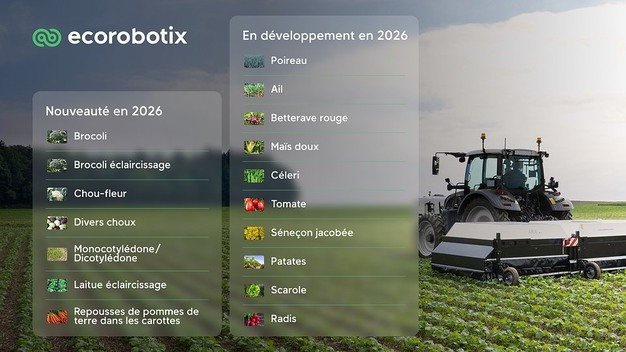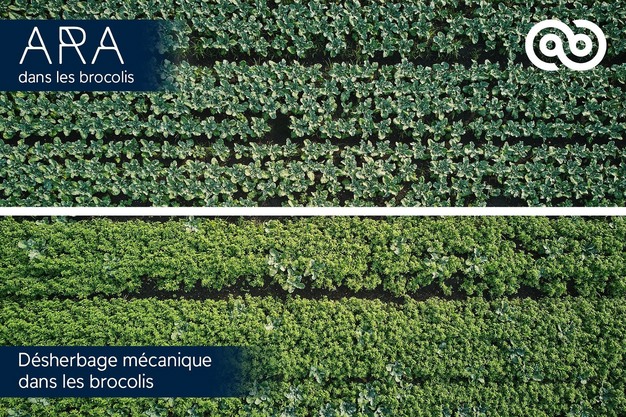Swiss company Ecorobotix announced the launch of its new 2026 crop algorithms last week. For the first time, an Ultra-High Precision (UHP) sprayer makes it possible for vegetable growers to use non-selective herbicides. This UHP treatment can help "reduce manual labor and increase profitability. It also provides a sustainable solution to the economic, environmental, and social challenges facing producers."
"For the first time, we are demonstrating that it is possible to use a non-selective herbicide on sensitive crops such as broccoli, with precision, targeting only the weeds while protecting the crop. It is a real alternative to selective herbicides, and opens up new prospects for vegetable production," according to CEO Dominique Mégret.
New algorithms on the market
Now launched for pre-order and available from March 2026, the new algorithms open up unprecedented prospects for vegetable crops, with a particular focus on broccoli, cauliflower, and other cabbage varieties. These advances include precision thinning for lettuce and broccoli. Appreciated in North America, this feature enables growers to greatly reduce the need for manual labor, produce more regular crops, and increase the quality of their harvests.
 © Ecorobotix
© Ecorobotix
Potato regrowth: A key issue for growers
After conclusive results on onion and endive crops, the "potato regrowth" algorithm is now available for carrot crops. Potato regrowth is a major problem for producers. It cannot be eradicated using traditional chemical methods without damaging the crop, and growers still have to eliminate it manually, which is tedious and costly. This algorithm offers carrot growers a technology that replaces manual labor with targeted, precise treatment.
Towards even finer differentiation of weeds
Ecorobotix's Plant-by-Plant™ artificial intelligence (AI) is also taking a step forward by refining its detection. It is no longer just about contrasting crops and weeds, but identifying classes such as monocots and dicots within crops. This advanced distinction is now available for carrots, lettuce, broccoli, cauliflower, various cabbages, onions, green beans, spinach, endive, sugar beet, and oilseed rape.
A major agronomic advance for growers
"Weed control in carrots has reached an even higher level of complexity since the withdrawal of Metribuzin, a key herbicide. With Ultra-High Precision spraying, it is now possible to carry out catch-up treatments against problems such as potato regrowth, black nightshade, and datura," according to Simon Gasser, head of crop algorithms at Ecorobotix.
These innovations open up new prospects for growers: a massive reduction in the manual work involved in weeding, a direct improvement in farm profitability, and effective alternatives in the face of increasing restrictions on the use of plant protection products.
 © Ecorobotix
© Ecorobotix
Algorithms in development for 2026
Ecorobotix is launching a series of algorithms under development, available free of charge during the test phase. These algorithms concern leeks, garlic, celery, potatoes, and ragwort in meadows.
This launch phase allows growers to test Ecorobotix's Plant-by-PlantTM technological advances on new crops today. The algorithms are already making it possible to extend treatment options while benefiting from the precision of ARA spraying.
For more information:
Ecorobotix SA
Y-Parc, Rue Galilée 6
1400 Yverdon-les-Bains
Switzerland
Phone: +41 21 561 07 00
ecorobotix.com/fr
